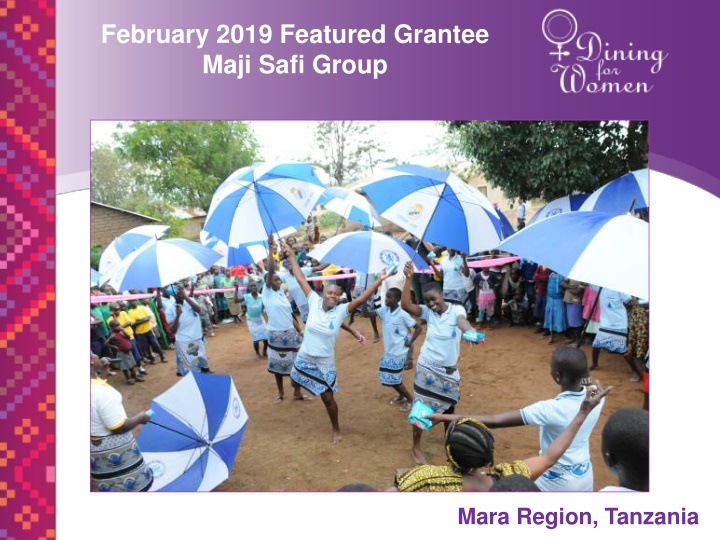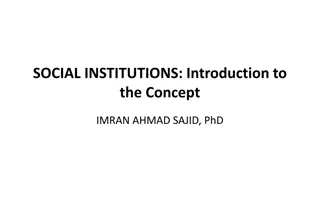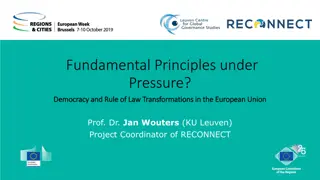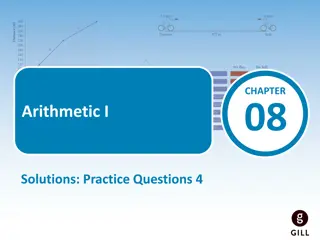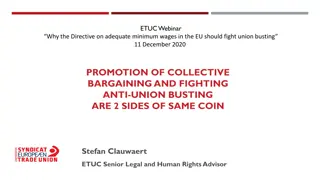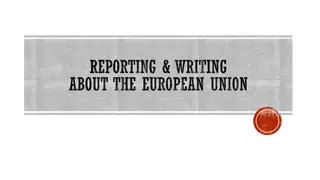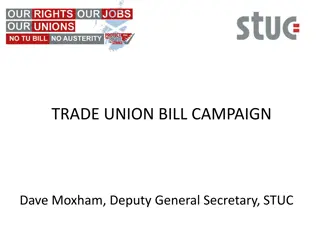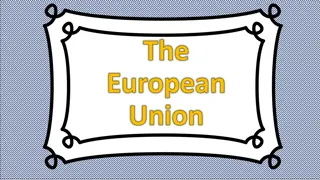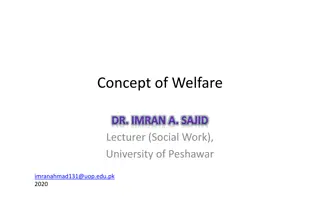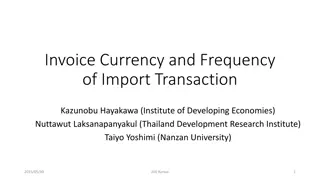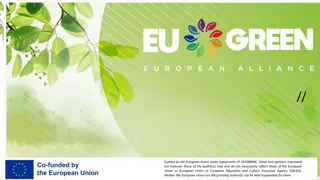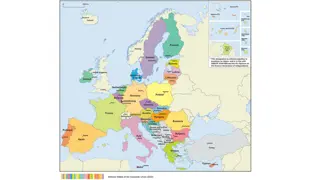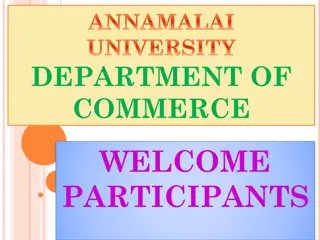European Union Overview - History, Institutions, Principles, and Currency
This presentation provides an overview of the European Union, covering its history from the idea of a united Europe to the formation of the European Economic Community and eventually the European Union. It details key institutions such as the European Parliament, the Council of the EU, and the European Commission. The presentation also explains the principles guiding the EU, including the adoption of the Euro as a single currency, freedom of movement, education development, peacekeeping efforts, and more. Additionally, it discusses the Euro as the official currency since 2002 and its unique banknote features.
Download Presentation

Please find below an Image/Link to download the presentation.
The content on the website is provided AS IS for your information and personal use only. It may not be sold, licensed, or shared on other websites without obtaining consent from the author.If you encounter any issues during the download, it is possible that the publisher has removed the file from their server.
You are allowed to download the files provided on this website for personal or commercial use, subject to the condition that they are used lawfully. All files are the property of their respective owners.
The content on the website is provided AS IS for your information and personal use only. It may not be sold, licensed, or shared on other websites without obtaining consent from the author.
E N D
Presentation Transcript
February 2019 Featured Grantee Maji Safi Group Mara Region, Tanzania
Introducing Maji Safi Group HEADLINE GOES HERE Text goes here Text goes here Text goes here Text goes here (MSG) promotes health and disease prevention in underserved and impoverished areas through holistic community empowerment, and by working predominantly with local women and youth. Maji Safi means clean water in Swahili. Maji Safi Group
About the Featured Grantee Founded in 2012 by Max Perel-Slater and Bruce Maj Pelz with the goal of addressing the root causes of preventable waterborne diseases Based on a participatory development HEADLINE GOES HERE model that involves female community members in all aspects of their work Employs and trains local residents to be full-time Community Health Educators (80 percent female) Text goes here Text goes here Text goes here Text goes here members to create programs that teach disease prevention in a culturally appropriate manner in the local language. Works with CHEs and community
Where in the world? Tanzania, Eastern Africa, bordering the Indian Ocean, between Kenya and Mozambique It is the largest and most populous East African country; with a population of more than 55 million Tanzania s youthful population about two- thirds of the population is under 25 is growing rapidly because of the high total fertility rate of 4.8 children per woman. The maternal mortality ratio is 398 deaths/100,000 live births live births; infant mortality rate is 38.7 deaths/1,000 live births The literacy rate is 77.9 percent of the population, with a 73.1 percent literacy for females Mara Region, Tanzania
Life Challenges of the Women Served HEADLINE GOES HERE Text goes here Text goes here Text goes here Text goes here contaminated with coliform, a bacterium commonly associated with diarrhea. Women and girls are heavily burdened with collecting water for their households. Fifty percent of illnesses come from preventable water- related diseases, and 99 percent of all drinking water is
Life Challenges of the Women Served Thirty-one percent of females in rural areas, like the Rorya District, have never attended school. A cultural taboo around menstruation and a lack of proper sanitary facilities at schools put girls at further risk of failing in their pursuit of education. Young women are embarrassed to attend school while menstruating due to the lack of latrines and clean water on school grounds and the unaffordable nature of sanitary materials.
What are we supporting? 1. Reduce school absences and build self-confidence related to menstruation. 2. Spread awareness about menstrual health management 3. Provide sustainable long-term access to Water, Sanitation and Hygiene products including sustainable menstrual cups. Year 1 Direct Impact: 4,242; Indirect Impact: 81,500 Year 2 Direct Impact: 5,748; Indirect Impact: 82,500
Budget DFW s grant of $49,995 will be used for a portion of the following: Item Description Total Includes menstrual cups, import, taxes and transportation of cups, school program/health club, curriculum, events, health screenings, teacher training seminar, and M&E tools Radio shows, female hygiene Schools $35,275 HEADLINE GOES HERE Awareness murals, government seminars, baseline survey, and marketing $8,040 instructional materials for menstrual cups Includes Female Hygiene Program Manager, Female Hygiene Program Coordinator, Accountant Includes external financial audit, office maintenance, utilities and office rent Text goes here Text goes here Text goes here Text goes here Other Salaries, Taxes, Pension, Health Insurance $4,080 $2,600 TOTAL EXPENSES $49,995
Share Your Thoughts 1. How do you think the design of this project lends to its future sustainability? 2. How do you think the menstrual cup will change the lives of women in the Mara Region? HEADLINE GOES HERE What do you think is the key to developing cultural acceptance of effective feminine hygiene and reducing the stigma surrounding a woman s period? 3. Text goes here Text goes here Text goes here Text goes here
Februarys Sustained Grantee: Catalyst Foundation Health and Hygiene Program in Ninh Thu n HEADLINE GOES HERE Province, Vietnam The purpose of the project is to provide families with daily access to safe water, proper sanitation, hygiene, and quality medical care by Installing a 4-tank water filtration system Building a low-cost, high-quality toilet at each home Training a local team of women plumbers Providing education on safe hygiene, menstruation, and sanitation Providing annual medical and dental care. Text goes here Text goes here Text goes here Text goes here Direct Impact: 140 women, 96 girls; Indirect Impact: 224
